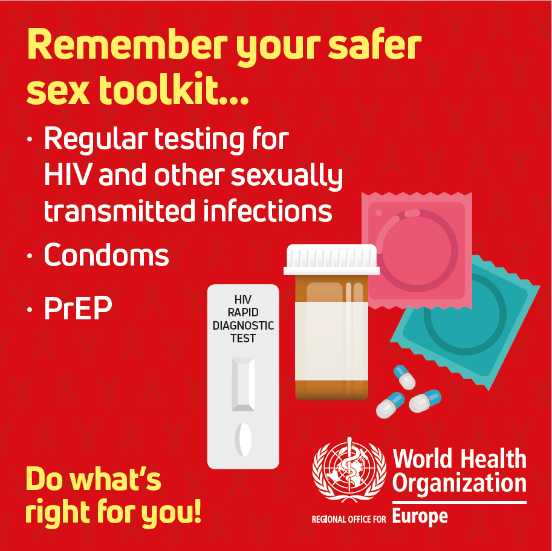A Comprehensive Guide to Lesbian Sex
Introduction: Embarking on a sexual journey, especially for the first time, can bring about nervousness and uncertainty, regardless of one's sexual orientation. In the case of lesbian sex, it is important to dispel common myths and misconceptions while educating oneself about the various possibilities and ensuring safety. This comprehensive guide aims to provide valuable insights into lesbian sex, debunk prevalent myths, explore pleasurable experiences, and emphasize the importance of practicing safe intimacy.

Understanding Lesbian Sex: Lesbian sex typically refers to sexual activity between two women, but it is essential to acknowledge that not all individuals engaging in such activity identify as lesbians. People may identify as bisexual, pansexual, queer, or heterosexual while participating in same-sex encounters. It is important to recognize that lesbian sex encompasses diverse gender identities, including cisgender, transgender, and intersex individuals. Each person's interpretation of lesbian sex is subjective, allowing for a broad or narrow definition.
Debunking Myths: To establish a healthy understanding of lesbian sex, it is crucial to debunk common misconceptions. Let's dispel a few prevailing myths:
- Absence of Gender Roles: Contrary to popular belief, lesbian sex does not require one partner to assume a "masculine" role while the other adopts a "feminine" role. Roles in sexual dynamics can vary among couples, but it is important to remember that sexual preferences and activities do not define one's gender identity.
- Unique Challenges: Lesbian sex is often perceived as easier because partners share the same gender. However, it is essential to acknowledge that anatomical differences exist even among women. Preferences and pleasure vary between individuals, making open communication and exploration vital for mutual satisfaction.
- Use of Strap-Ons: While strap-ons are commonly associated with lesbian sex, they are not mandatory. Couples can explore various sexual activities without relying on this specific sex toy. The use of strap-ons is a personal choice, and preferences can vary from person to person.
- Scissoring: Scissoring, a commonly sensationalized act in depictions of lesbian sex, is not a universally favored or practiced activity. Many individuals find it impractical or unpleasant. It is crucial to recognize that sexual preferences and practices vary widely among couples.
- The Goal of Orgasm: The belief that sexual activity should culminate in orgasm is a misconception. Pleasure can be derived from various sexual acts, and it is entirely acceptable to conclude a sexual encounter without one or both partners reaching orgasm.
Exploring Your Anatomy: Becoming familiar with your own body through masturbation is an essential step before engaging in sexual activities. Self-exploration allows you to understand what feels pleasurable and aids in effective communication with your partner. Everyone's preferences and responses are unique, so what works for one person may not work for another.
The Power of Communication: Open and honest communication forms the foundation of a healthy sexual relationship. Seeking consent and checking in with your partner throughout the experience is crucial. Discuss any concerns, insecurities, or previous sexual experiences openly. Here are some helpful phrases for initiating conversations:
- Can I kiss you?
- Can we try [specific sexual activity]?
- Can I undress you?
- Would you like to engage in sexual activity?
- I'm interested in trying [specific sexual activity]. What are your thoughts?
- Are you enjoying yourself?
- Should I stop?
- Are you comfortable with this?

Breast and Nipple Play: Engaging in breast and nipple play can be a pleasurable experience for many. Being gentle and inquiring about your partner's preferred pressure level is important. Various activities can be explored, including rubbing nipples, light pulling, licking, sucking, using sex toys like nipple clamps or vibrators, or introducing different sensations like ice blocks or tingling lube.
Manual Genital or Anal Stimulation: Manual stimulation involves using hands to pleasure your partner. Techniques and preferences differ based on anatomy. Here are some suggestions for each scenario:
For partners with a vulva:
- Clitoral stimulation: Experiment with circular or up-down motions using varying pressure and speed.
- G-spot exploration: Use a finger to locate the G-spot, a sensitive area within the vaginal wall.
- Teasing motions: Lightly touch areas around the clitoris or vagina teasingly.
- Anal exploration: Touch the skin outside the anus or consider anal penetration with fingers.
For partners with a penis:
- Hand jobs: Discover your partner's preferred speed and pressure by holding their penis firmly and gliding your hand up and down.
- Focusing on the head: Experiment gently rubbing or massaging the penis head.
- Additional erogenous zones: Pay attention to the scrotum, perineum, and the skin surrounding the anus.
- Anal exploration: Like with partners having a vulva, explore anal stimulation if desired.
Oral Genital or Anal Stimulation: Oral stimulation involves pleasuring your partner using your mouth and tongue. Consider the following tips for each scenario:
For partners with a vulva:
- Focus on the clitoris, vaginal opening, and surrounding areas.
- Experiment with kissing, licking, or sucking motions.
- Include the inner thighs or anus if desired.
For partners with a penis:
- Concentrate on the penis, scrotum, perineum, and inner thighs.
- Explore a variety of kissing, licking, or sucking techniques.
- Incorporate anal stimulation if mutually agreed upon.
Fingering, Fisting, and Other Penetration: Penetration can involve a range of objects or body parts. Prioritizing consent, using appropriate lubrication, and engaging in safe practices are important. Some suggestions include the following:
Vaginal Penetration:
- Penis-in-vagina sex: Discuss contraceptive options to prevent unintended pregnancy.
- Fingering or fisting the vagina: Use fingers or hand movements to stimulate the vagina.
- Introducing sex toys: Consider incorporating dildos or vibrators for added pleasure.
Anal Penetration:
- Prioritize lubrication: A suitable lubricant is crucial since the anus doesn't produce natural lubrication.
- Gentle approach: The lining of the anus is thinner than that of the vagina, so proceed with care.
- Communication and consent: Engage in open dialogue about your partner's desires, limits, and comfort levels.
- Fingering or fisting the anus: Explore manual stimulation with fingers or hand movements.
- Sex toys for anal play: Use specially designed toys such as anal plugs with proper care and caution.
Positions to Explore: Experimenting with different positions can enhance pleasure and intimacy. While there are numerous options, here are a few to start with:
- Oral or manual sex: Lie on your back with your legs open while your partner lies on their stomach between your legs.
- Penis-in-vagina sex: The classic missionary position allows for intimate connection. Consider using a pillow beneath the pelvis for improved angles.
- Penetrative anal sex: Doggy style is a common position for anal penetration. The receiving partner gets on all fours while the giving partner kneels behind.

Practicing Safe Sex: It is crucial to prioritize sexual health and reduce the risk of sexually transmitted infections (STIs). Regardless of anatomy, sexual activities can transmit STIs. Factors influencing the risk include specific activities, sexual histories, and barrier methods like condoms. Stay informed about safer sex practices and consider regular STI testing for a healthy and responsible sexual life.
Remember, everyone's experiences and preferences are unique. Communication, consent, and mutual pleasure should guide your exploration of sexual activities.
Many people hold the misconception that lesbians cannot get pregnant or that lesbian sex cannot lead to pregnancy. However, this myth is based on the assumption that both partners are cisgender women. In reality, if one partner is transgender with a penis and the other is cisgender with a vagina, they can engage in penis-in-vagina sex, resulting in pregnancy.
If pregnancy is not desired, partners must discuss birth control options openly and honestly. There are several methods available, including hormonal contraception like the pill and the use of condoms. Combining these methods can provide effective protection against unintended pregnancy.
In addition to pregnancy prevention, practicing safer sex is essential to reduce the risk of sexually transmitted infections (STIs) and other infections. Here are some recommended strategies:
- Dental dams: When engaging in oral sex on the vagina or anus, using dental dams can provide a barrier of protection.
- External condoms are suitable for penis-in-vagina sex, penis-in-anus sex, or oral sex on penises. Ensure proper and consistent use for maximum effectiveness.
- Internal condoms: These can be used for penis-in-vagina sex or penis-in-anus sex, offering protection during penetration.
- Gloves or finger cots: When engaging in manual-genital stimulation, such as fingering, hand jobs, or clitoral stimulation, gloves or finger cots can help reduce the risk of infections. Consider using lubrication for added comfort.
- Hand hygiene: Proper hand hygiene is crucial for fingering, clitoral stimulation, and hand jobs. Wash hands thoroughly before engaging in these activities to prevent the spread of germs. Keeping nails short reduces the risk of cuts and tears, which can lead to infections. Using cotton balls inside rubber gloves can provide a different sensation.
- Lubrication: Lubrication is beneficial for all types of penetrative sex as it reduces the risk of tearing and irritation in the vagina or anus. For anal sex, lubrication is particularly important, as the anus does not produce its lubricant.
- Clean sex toys: Sex toys can transmit infections from one person to another, so cleaning them thoroughly between uses is essential. Use condoms on penetrative toys to make cleaning easier and provide a different sensation.
- Regular testing: Whether in a committed relationship or engaging in sporadic sexual encounters, regular testing for STIs is crucial. Consult a healthcare provider to determine your situation's recommended frequency and tests.
Remember, while the idea of having sex for the first time can be overwhelming, a wealth of information is available to guide you. It's important to note that sex is a skill that improves with practice and experience.
If you have questions or need further guidance, consider contacting an LGBTQ+-friendly healthcare provider who can provide tailored information and direct you to additional resources. They are knowledgeable and can address your specific concerns.